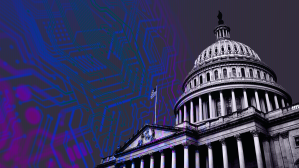- Sponsored
- Modernization
Agency IT chiefs see ways to improve mission services in pandemic

The pandemic is pushing government agencies to bring agility to the mission and improve digital services for citizens, according to federal and industry IT leaders.
During the crisis, agencies were forced to accelerate key technology deployments to meet unexpected demands for online services and to improve secure remote work connections for employees, said IT leaders interviewed in a video series on preparing a future-ready government.
“Where we were five years ago, from a technology perspective, is quite different than where we are today,” shared Francisco Salguero, CIO for the Federal Communications Commission. “This crisis required us to move at such a rapid pace, for everyone, that it really showed how IT can keep up with the need of that type of pace and speed,” he said.
“What I see for the future is the appetite will be there, more so than in the past, to actually move forward with the modernization efforts we need overall,” he added.
In addition to advancing cloud strategies, the pandemic forced many leaders to confront traditional ways of working in their organizations that have hampered modernization initiatives.
The video series, produced by FedScoop and StateScoop, and underwritten by Google Cloud, features interviews with a dozen federal, state and industry IT leaders about their efforts to digitize services and move securely to the cloud.
Lessons learned during the COVID-19 pandemic
Several of the leaders interviewed discussed how weaknesses in their systems and processes were brought to the surface during the pandemic.
Jamie Holcombe, CIO for the U.S. Patent and Trade Office, described the crisis as an extraordinary scaling exercise. He and others discovered their vendor contracts didn’t provide them flexibility to expand to their cloud server capacity to meet their needs. Holcombe said that because scaling is an enabler for other modernization initiatives — like moving legacy applications to the cloud — the pandemic became an opportunity to reassess vendor contracts.
The crisis also forced many government leaders to confront weakness in the work culture. Lauren Knausenberger, the U.S. Air Force’s Deputy CIO, described how a common roadblock to modernization occurs from looking at technology as a backend function rather than a mission enabler. That perspective changed to some extent, when the pandemic forced everyone to work from home.
“A lot of it has come down to people realizing what they didn’t have before, and how that really drives future requirements. [Previously] there wasn’t a whole lot of appetite for adoption of [cloud projects] among people in the Pentagon,” she said. “We have this situation where the playing field has been completely leveled, and everyone has to work at least part of their time outside the bounds. Everyone can see that frustration [for] this new way of working.”
The need for greater agility was another key take-away for IT leaders.
“Government workers have become more agile in the short term, [but] I think the long-term agilities are only going to come with a focused effort,” said Shannon Sullivan, director of federal at Google Cloud. “The way the US has approached acquisition and delivery of systems have given vertical solutions. [However] the circumstances we’re experiencing right now are going to really change the way they approach and how their mission is delivered.”
AI-assisted technologies will make an impact
Though many IT leaders discuss the merits of artificial intelligence, the pandemic underlined the need to implement changes now, especially among state and local agencies.
Jennifer Ricker, acting assistant secretary at the Illinois Department of Innovation and Technology discussed how the pandemic triggered overwhelming demands on the state’s unemployment insurance system. The state turned to chatbots to help answer basic questions on their employment security website, and which could be trained to add questions and learn what people need.
“Previously we had primarily been an operation with a lot of offices and walk-in traffic from residents. We had to close those offices and prevent individuals from coming in face-to-face, handing them paper, and all the questions that come around about unemployment insurance,” she said.
Los Angeles CIO Ted Ross similarly expanded L.A.’s use of chatbots across several city services to help answer residents questions on permits, utility payments and traffic tickets.
The goal, he said is to streamline processes wherever possible and eliminate some of the physical touches. By connecting with people more on their smartphones and through social media, the city is looking to change the nature of how citizens engage with government.
“It’s really important to have platforms in place before a crisis, as opposed to waiting until a crisis, then trying to figure out procurement and how to build and develop something. We need to be ready for something to happen. We can’t simply respond to react to that,” he said.
What “future-ready” means for government
These executives expressed varying ideas on future developments — improve citizen services, bring agility to the mission or access a skilled workforce outside of geographic boundaries.
Allowing people to work from anywhere can provide a greater competition for talent, said Josh Marcuse, head of global strategic business executives at Google Cloud.
“The real promise of virtualization is not that we can have more online meetings, it’s actually that we are able to draw on this deep talent pool, regardless of where in the world people happen to be born, or happen to live,” he said.
By simultaneously improving infrastructure with modern capabilities like AI, ML and data science, while bolstering the skilled workforce needed to manage these systems government can greatly improve their mission.
Other participants in the video series include:
- Guy Cavallo, (at the time) Deputy CIO, SBA
- Ervan Rodgers, CIO, Ohio
- Gen. Matt Easley, Director, Army Artificial Intelligence, Army Futures Command
- Mike Madsen, Deputy Director, Defense Innovation Unit
- Roy Varghese, CIO, National Marine Fisheries Service, NOAA
This video series was produced by FedScoop and StateScoop and sponsored by Google Cloud.






